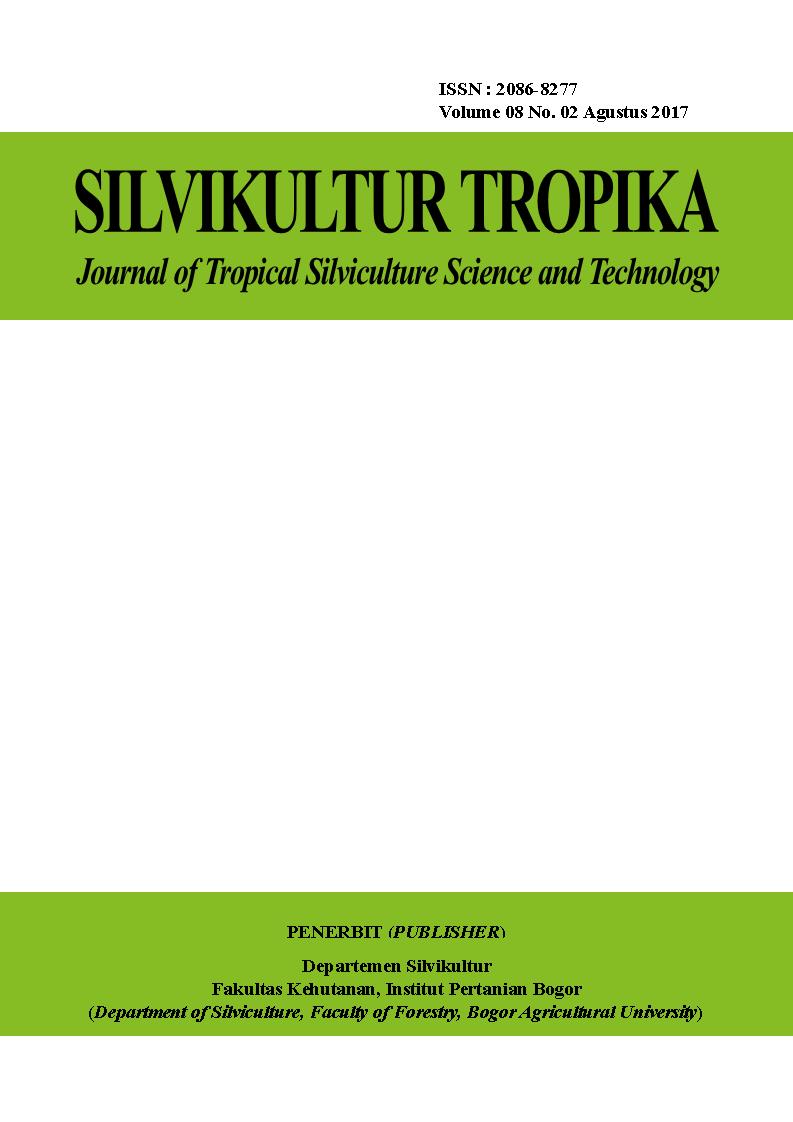KEBERHASILAN PERTUMBUHAN STEK PUCUK MINDI BESAR (Melia dubia Cavanilles) TERHADAP PENGGUNAAN MEDIA DAN ZAT PENGATUR TUMBUH Successfully Growth of Shoot Cutting Mindi Besar (Melia dubia Cavanilles) on Media and Growth Regulator
Abstract
Mindi besar (Melia dubia Cavanilles) is one of fast growing tree species from family Meliaceae which growing in tropical evergreen forests. The aim of this study was to determine the best combination of medium and growth regulator for vegetative propagation of mindi besar trees. The completely randomized factorial design was used two factors; medium (M) there were two types of media; zeolite (M1) and soil + rice husk (2:1 v/v) medium (M2), the growth regulator (H) had three levels; control (H0), pure coconut water (H1), and Auksin sintetis (H3). The study was conducted at two locations, first at green house with rooting room KOFFCO System and second at seedbed with rooting room containment model (MS). The research at greenhouse using rooting room KOFFCO System showed that interaction of media with growth regulator had a very significant effect on the percentage of fresh cuttings and rooted cuttings and had a significant effect on the number of primary roots. The averages of percentage of fresh cuttings and rooting were 83.3% and 66.7% for M1H2 and 76% and 60% for M2H0. The M2H1 reached 2.9 number of primary roots. At the MS model, the medium factor had significantly different only the number of secondary roots (18.11). The growth regulator factors had significantly different on the percentage of rooted cutting (3.33%), root lenght (10.5 cm) and root dry weight (0.18 g).
Key words: containment model, KOFFCO system, Rootone-F, zeolite.










